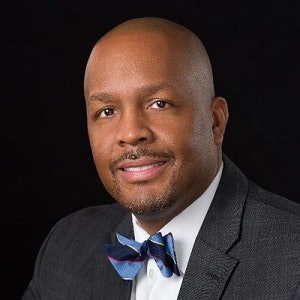College-bound students often make decisions about a major without a clear understanding of how those majors align with career options, which can cause them to accumulate excess credits, extend amount of time to degree attainment or even drop out completely.
That’s the findings from a new report by Complete College America (CCA), which outlines the components of its strategy Purpose First that helps students look at their options, make informed decisions on a major and achieve goals toward on-time graduation. The report also provides results from a three-year demonstration project done in support with Strada Education Network.
Purpose First has always been a part of CCA’s prescriptive set of guidelines for the guided pathways movement, said Dr. Dhanfu E. Elston, vice president of strategy at CCA. The strategy aims to provide a “missing link” between career choice, guided pathways and first-year momentum.
 Dr. Dhanfu E. Elston
Dr. Dhanfu E. Elston“One of the things that we were quickly able to learn and share in the larger higher education community was very few institutions were doing that well in helping students identify a strong connection between their majors as well as their career outcomes,” said Elston. “The Purpose First strategy is really a development of that informed choice of major component of our momentum pathways structure.”
Underrepresented minorities and less advantaged students are primarily affected by uninformed career choices as a result of them not having the social capital and the lack of institutions developing systems to help them develop that capital, Elston noted.
However, these students are eager to receive the assistance, the report said.
Students at historically Black colleges and universities (HBCUs) were more than 50 percent likely to utilize resources from career services to learn about careers than their peers at predominately White institutions.
Helping all kinds of students understand their associated skill sets that could be aligned with different majors that can assist them in making an informed decision is the key factor in creating that “missing link,” Elston said.
“…We say that this is kind of the missing link in that guided pathways movement, because the guided pathways work has all been about getting students on a path and ensuring that they stay on the path. And that is important, but the missing piece of that is the why. Why are you choosing this institution, why are you choosing this major?”
The report also outlines best practices for successful implementation of Purpose First across five key areas — institutional culture, recruitment, admissions and onboarding, career exploration, academic structures and first year and advising.
In order for any significant change effort to occur, broad support from institutional faculty and staff on the value of academic and career outcomes needs to take place.
Some best practices provided that can help an institution successfully utilize the strategy include:
- Collecting and analyzing data on undeclared majors and on the frequency and number of major data to understand the current state and locate opportunities for improvement.
- Evaluate underrepresentation across colleges, meta-majors and majors by race, ethnicity, age, gender and Pell status.
- Meet with students, one-on-one or in focus groups, to understand a school can assist them in reaching future career goals.
- Establish a campuswide working group focused on Purpose First with representatives from administration, faculty, student support professionals and students.
 Dr. Yolanda Watson Spiva
Dr. Yolanda Watson SpivaThough many believe that the idea of career readiness begins once a student steps into the career services office, it’s important for institutions to use this strategy as prospective students begin applying to college, Elston said.
“We all know that far too many students wait until their final semester, if ever, to get a chance to connect with those career coaches or career advisers. So in a purpose-driven, Purpose First kind of experience that should occur during the recruitment of students,” he said. “Helping them identify a meta-major, so they’re not just choosing a major, but are given an understanding of how we connect with the career that they want to pursue. And to me, that makes a lot of sense and has a lot of alignment with the K-12 system.”
In addition, employers can play a valuable role in the Purpose First student experience by continually providing the most up-to-date information on in-demand careers and related skills, said Dr. Yolanda Watson Spiva, president of CCA.
Institutions can then utilize that information “to develop structures that aid students in making those connections inside and outside of the classroom,” she said. “As more states, employers and policymakers focus on skilled workforce needs and outcomes, higher education can and must be a launching pad to rewarding careers by supporting students in the decision-making process.”
What CCA is really trying to do with this strategy, Elston said, is “advance the conversation and help institutions focus on the fact that families, students, the communities as well as employers demand this type of structure in higher education.”
“When we’ve engaged with students in this conversation, far too often students say, ‘I wish I had known this. I wish someone had made this a part of the structure so I could have had these questions answered before I wasted time and resources swirling in between majors.’”
Monica Levitan can be reached at [email protected]. You can follow her on Twitter @monlevy_.
















